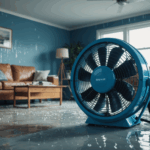When analyzing plumbing costs, it’s crucial to understand that various factors influence the overall expense you might encounter. These factors are pivotal in carrying out a comprehensive cost analysis, essential for effective homeowner budgeting.
One significant factor affecting plumbing costs is the complexity of the job. Plumbing tasks vary widely in terms of the expertise, time, and tools required. For example, a straightforward job like fixing a minor leak often demands less time and resources than a complex project like repiping an entire house. The complexity can dictate the hours worked and thus the total labor cost.
Another determinant is the material costs. Depending on the job, the type of materials required can markedly affect the expenses. For instance, using higher-end materials such as copper or PEX pipes for a project can significantly raise costs compared to more affordable materials like PVC.
Additionally, emergency or after-hours services can dramatically inflate plumbing costs. Plumbers typically charge premium rates for urgent situations or services requested outside regular business hours. Therefore, planning repairs during standard times can contribute substantially to homeowner budgeting.
The experience and qualifications of the plumber also play a substantial role. Highly experienced and certified plumbers tend to charge more for their services than those with less experience. While it might seem tempting to hire less expensive, less experienced professionals, bear in mind that improperly executed plumbing work can lead to greater costs down the line.
Moreover, the geographic location can fundamentally influence pricing, as certain areas have a higher cost of living and therefore naturally higher service fees. This component of cost will be addressed in more detail in another section but serves as a critical point in understanding pricing variations.
- Job Complexity: Affects labor hours and expertise required.
- Material Costs: Higher-end materials increase overall expenses.
- Emergency Services: Premium charges apply for after-hours work.
- Plumber’s Experience: More qualified professionals generally cost more.
- Location: Regional cost variations influence pricing.
To further understand how these factors interact with each other and determine the ultimate cost to the consumer, consider the following comparative table that highlights typical costs associated with these elements:
| Factor | Low-End Cost | High-End Cost |
| Basic Job Complexity | $50 | $150 |
| Material Costs | $20 | $200 |
| Emergency Service Charges | $50 | $300 |
| Experienced Plumber Rates | $100 | $500 |
| Regional Location | $80 | $200+ |
Understanding how these variables can influence plumbing costs is essential for homeowners aiming to manage their expenses effectively. Preparing a thorough cost analysis can help in identifying where adjustments might be made and in budgeting for both expected and unexpected plumbing needs.
Average pricing for common plumbing services
Estimating the average pricing for common plumbing services is essential for accurate homeowner budgeting. Plumbing costs can vary widely depending on the specific service needed, as well as many factors discussed earlier. Below is a breakdown of some of the most common plumbing services and their typical price range.
1. Fixing a Leaky Faucet:
– Basic leaky faucet repair is among the simpler plumbing tasks.
– Average Cost: $75 – $150
– Factors Influencing Cost: Type of faucet, severity of the leak, and any replacement part that may be needed.
2. Toilet Repair:
– This can include tasks such as fixing a running toilet or replacing a faulty fill valve.
– Average Cost: $125 – $300
– Factors Influencing Cost: The complexity of the repair, the cost of replacement parts, and toilet type (e.g., dual flush models might be more expensive).
3. Water Heater Installation:
– Installing a new water heater involves removing the old unit, setting up the new one, and ensuring everything is functioning correctly.
– Average Cost: $1,000 – $3,500
– Factors Influencing Cost: The type of water heater (tankless or traditional), size, brand, and any additional plumbing work required.
4. Pipe Repair or Replacement:
– This service can range from fixing a single pipe to replacing an entire piping system.
– Average Cost: $150 – $2,000
– Factors Influencing Cost: Extent of the damage, pipe material (copper and PEX being costlier than PVC), and accessibility of the pipes.
5. Drain Cleaning:
– Clearing a clogged drain can be a straightforward service but can also escalate if the blockage is severe or deep within the pipes.
– Average Cost: $100 – $300
– Factors Influencing Cost: The location and severity of the clog, the equipment required, and potential need for follow-up service if issues persist.
Understanding these average costs helps in conducting a comprehensive cost analysis and planning effectively for both minor repairs and major projects. Homeowners should be prepared for variations in costs due to unexpected issues or additional work that may arise during the service. Having a clear understanding of the average pricing and conducting a thorough price comparison among providers can contribute significantly to better cost management and help avoid unnecessary expenses. While these prices provide a framework, actual quotes will vary, and obtaining multiple quotes can be a prudent step in ensuring you pay a fair price.
Regional differences in plumber rates
Plumbing rates can vary significantly depending on the region, an aspect that plays a crucial role in homeowner budgeting and comprehensive cost analysis. When it comes to regional variations, several factors contribute to these differences, such as local economic conditions, cost of living, and market demand for plumbing services.
In urban areas with a higher cost of living, such as New York or San Francisco, homeowners can expect to pay a premium for plumbing services. This is largely due to the higher operational costs businesses incur in these regions, from workspace leases to labor rates. Additionally, densely populated cities often have heightened demand for quick plumbing services, which can drive prices up. Conversely, in rural or less densely populated areas, plumbing costs may be lower as the cost of living and business operation expenses are reduced. However, availability of skilled plumbers might be limited, sometimes requiring professionals to travel longer distances, potentially incurring additional fees.
Another aspect to consider is the regional climate, which can impact plumbing needs and hence the cost. Areas with harsher climates, such as those with extreme cold, often see increased demand for weather-specific plumbing services like pipe insulation and repair from freezing incidents. In contrast, warmer regions might not see such high seasonal spikes, stabilizing prices throughout the year.
Regional regulations and local licensing requirements can also influence plumbing rates. Some areas may impose stricter codes and standards, necessitating plumbers to invest more in certifications and compliance measures, indirectly affecting their rates. These requirements can ensure high-quality service, but it is essential for homeowners to incorporate these factors into their cost analysis for an accurate budget plan.
Ultimately, homeowners should be aware of these regional differences in plumbing costs when planning and managing their property maintenance budgets. Understanding the local market and gathering quotes from multiple providers can help ensure fair pricing and quality service. By recognizing these variations, individuals can make informed decisions and avoid unexpected expenses, leading to more efficient homeowner budgeting and effective control over home service costs.
Additional fees and hidden charges
When assessing plumbing costs, it’s easy to overlook additional fees and hidden charges that can significantly impact your budget. These unexpected expenses can arise during the execution of a plumbing project, leading to a final bill that exceeds your initial estimates. Being aware of these potential costs is crucial for accurate cost analysis and effective homeowner budgeting.
One common hidden charge is the fee for diagnostic or inspection services. Before tackling a plumbing issue, many professionals conduct a thorough inspection to identify the root cause of the problem. Although this step is essential for devising an effective solution, some plumbers charge separately for these diagnostics, adding an unexpected cost to your bill.
Travel fees are another aspect to consider, particularly if you live outside a plumber’s usual service area. Plumbers might include a surcharge for the distance traveled, which can inflate the overall cost. It’s advisable to inquire upfront if distance will factor into their pricing and explore options for hiring a local plumber to potentially avoid this extra charge.
Permits and licenses, required for specific plumbing projects such as new installations or major renovations, can also contribute to increased costs. These permits are necessary to comply with local building codes and regulations, but they aren’t always included in the initial quote. Before commencing work, homeowners should confirm whether the plumber’s estimate covers these charges or if they’ll need to be paid separately.
Furthermore, some plumbers charge additional fees for disposal and cleanup services. Removing old fixtures or disposing of waste materials from a job can incur extra costs, which are occasionally omitted from the quoted estimate. Clarifying whether these tasks are included in the quoted price can prevent unpleasant surprises upon receiving the invoice.
Emergency services often warrant a special mention. As previously noted, plumbing emergencies that occur after hours or on weekends usually come with premium rates. Beyond these heightened rates, some service providers might add surcharges for the immediacy and inconvenience of emergency responses, especially if they need to reallocate resources to attend to your situation swiftly.
Finally, it’s worth noting the potential for upselling during plumbing service calls. While professionals may suggest additional products or services beyond the scope of the original task, it’s essential to differentiate between necessary recommendations and opportunistic sales pitches that aren’t immediately required. Being prepared to assess these suggestions critically can help maintain your budget and prioritize immediate needs over additional enhancements.
By understanding these potential additional fees and hidden charges, homeowners can perform a more comprehensive cost analysis and develop a realistic budget for their plumbing needs. Communicating clearly with service providers and requesting detailed estimates can significantly reduce financial surprises, ensuring that your investment in maintaining or renovating plumbing systems remains manageable and within your planned expenditure limits.
Tips for saving money on plumbing services
Optimizing plumbing expenses requires a blend of strategic planning and informed decision-making. One effective way to manage these costs is by conducting regular maintenance and inspections. By addressing minor issues before they evolve into significant problems, homeowners can avoid costly repairs and emergency services, ultimately contributing to more stable homeowner budgeting.
Engaging in comparative shopping can also help reduce expenses. Obtaining multiple quotes from various plumbers allows you to assess standard rates and identify competitive pricing. Additionally, explore any bundled services or discounts that might apply to larger projects or recurring maintenance agreements. This kind of cost analysis can unveil potential savings opportunities, reinforcing efficient financial planning.
DIY approaches to simple plumbing tasks can further cut expenses. While it’s crucial not to attempt jobs beyond your expertise, addressing uncomplicated issues such as clearing minor clogs or replacing worn washers can eliminate the need for professional intervention. Investing time in learning basic plumbing skills can thus lead to significant reductions in annual plumbing costs.
Moreover, prioritizing energy-efficient fixtures can lead to long-term savings. Upgrading to low-flow toilets or water-conserving showerheads might incur some initial expenditure but will decrease water usage and utility bills over time, enhancing overall cost efficiency.
Open communication with your plumber is vital to managing expectations and finances effectively. Discuss your budget constraints and seek recommendations on cost-effective solutions. A transparent dialogue can prevent unnecessary expenses and ensure that you remain informed of potential additional fees before work commences.
Lastly, planning for future plumbing needs can prevent unexpected financial strains. Setting aside a contingency budget for plumbing emergencies or necessary upgrades ensures you are prepared for unforeseen challenges, thereby facilitating more effective homeowner budgeting.
By integrating these strategies into your property maintenance routine, you can significantly reduce plumbing expenses and achieve a more balanced cost structure, allowing for more flexible financial management.
In conclusion, managing plumbing costs involves a comprehensive understanding of the factors influencing prices, regional variations, and potential hidden fees. By employing cost-saving strategies and maintaining an open line of communication with service providers, homeowners can achieve efficient budgeting and avoid unexpected expenses. Through informed decision-making and proactive planning, you can ensure your plumbing systems remain both functional and financially feasible.










